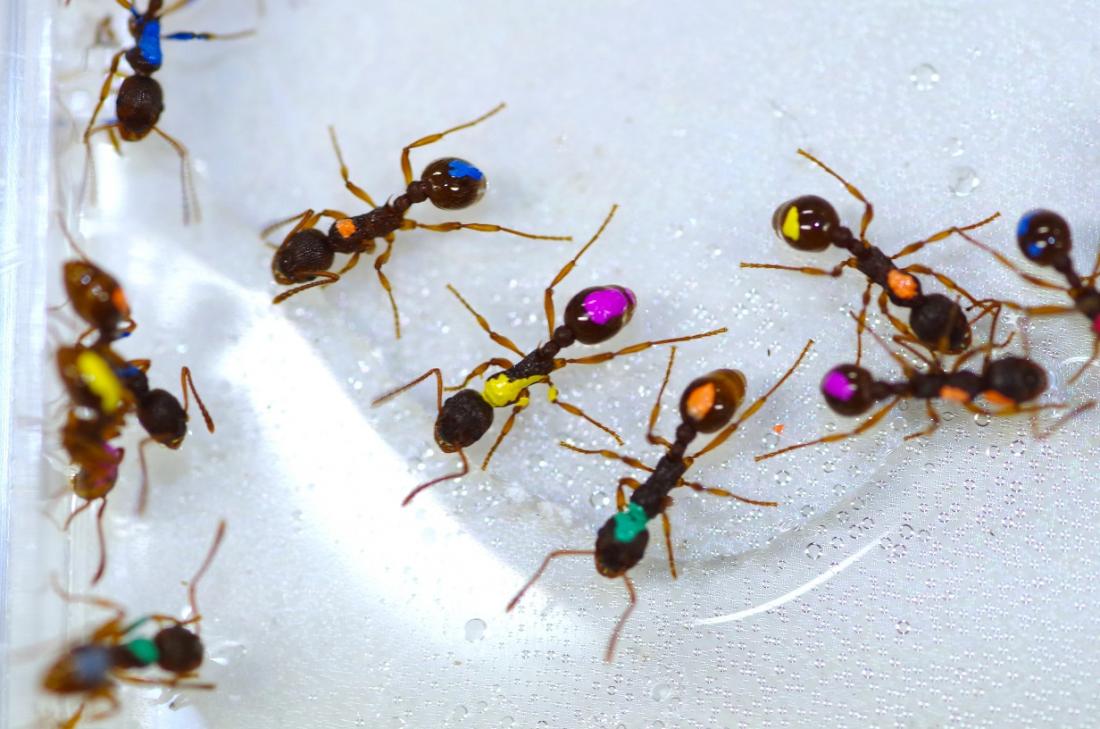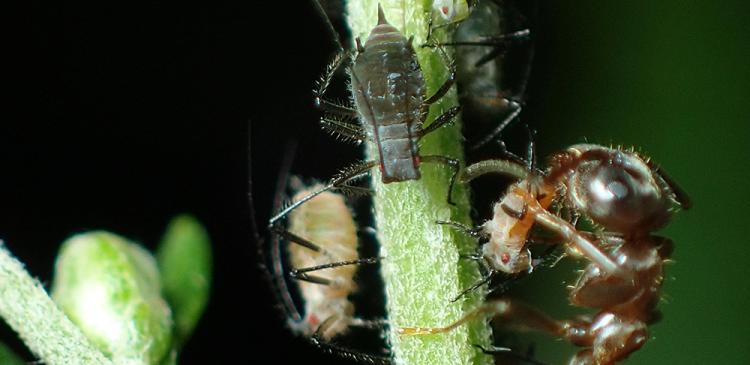Myrmica kotokui, common ants found in Japan, were used for the analysis.
A quick glance at an ant foraging trail or beehive shows throngs of tireless workers feeding and protecting their colonies. A closer look reveals otherwise. In fact, many ant, bee and termite workers are slackers. In some cases, four-fifths of workers appear to just rest, eat, clean themselves or walk about. The remaining workers toil hard.
Scientists have spotted lazy workers in social insects since the 1980s. Yet insect societies, similar to humans, compete on efficiency and productivity. So what explains the existence of lazy workers?
One possible explanation is that lazy workers slack to ensure the colony’s survival against a wipeout of active workers, says a study published in Scientific Reports . In this study, a group of scientists at Hokkaido University and Shizuoka University in Japan found that when active ants are disabled by a rare
catastrophe, the inactive ants, rested and energetic, step in to keep the colony running.
The team based its study on Myrmica kotokui , a common ant found in Japan. Like many other ant species, a certain percentage of M. kotokui do not work. In 2013, the team found that removing the most active workers from a colony prompted the previously lazy ants to work. They deduced that workers need different levels of stimulus to start working. A worker with a low stimulus threshold picks up tasks quickly, while one with a high threshold waits. In other words, the lazy worker is like the housemate that washes dirty dishes only if the house begins to stink.
But unlike washing dishes, some tasks, like cleaning and feeding the eggs, are so critical to ant colonies that negligence would cause its collapse. The scientists hypothesized that lazy workers serve as backups for carrying out critical tasks when active ants cannot.
To test its hypothesis, the team designed computer simulations of ant colonies. In the two models it built, workers had either the same stimulus thresholds or variable thresholds. Tasks appeared randomly in the simulations. All tasks started with the same stimulus value that increased if the tasks were unattended to. When a worker encountered a task that satisfied its threshold, it completed the task, became tired and could not work until it recovered. Fatigue recovery rates were also simulated in the models. A colony went extinct when no tasks were performed.
The simulations showed that colonies of workers with variable thresholds always completed fewer tasks than those with the same-stimulus threshold. Hence, colonies of workers with varying response to tasks were less productive than those with uniform response.
However, colonies of workers with variable thresholds persisted longer before they went extinct. Since not all workers responded to tasks identically, they did not exhaust as a collective. In contrast, colonies of workers with uniform response went extinct more quickly when there were more tasks and fatigue recovery was slower.
The scientists compared their simulation results with behaviours of real M. kotokui workers. They found that when the most hardworking ants turned idle, the laziest ants began to work. Reality agreed with the simulation.
Researchers still do not know how colonies generate or maintain their workers’ different thresholds to tasks. But this study shows that lazy workers improve colony persistence at the cost of productivity.
So lazy ants are not selfish, they are just waiting to work and they are very patient.
---------------------------------------------------------------
Did you know?
A second recent study published by Hokkaido University researchers showed that ants can be picky about the colour of the bugs that provide them with honeydew. Ants protect the red and green bugs, called aphids, from the predators that eat them, in a mutually beneficial relationship. The study found that ants have a preference for aphid colonies that are 65% green. The result suggests that aphid colonies that have more colour variation will survive longer than those that don’t.
---------------------------------------------------------------
Further information
Associate Professor Eisuke Hasegawa
E-mail: [email protected]
Laboratory of Animal Ecology, Department of Ecology and Systematics, Graduate School of Agriculture Hokkaido University




